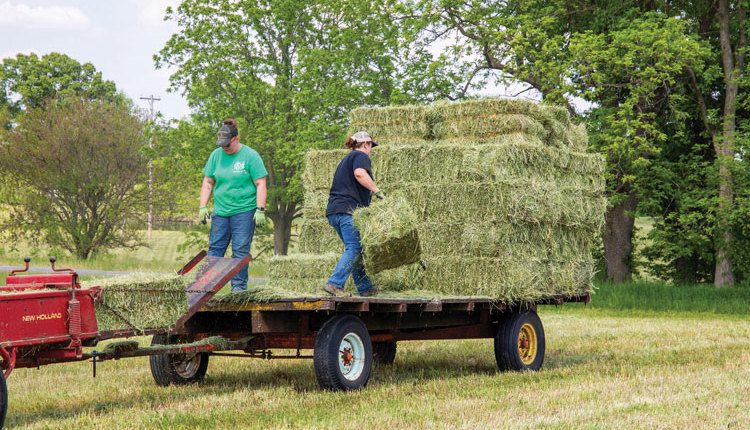Have it your way |
| By Mike Rankin, Managing Editor |
|
|
 This scene was a much more common one 50 years ago. These two central Michigan women were hard at work in late May putting up first-crop hay. There is no doubt many of our subscribers can recall their own experiences of "riding the flat rack." Few other activities offer a greater opportunity to build muscles, a sense of balance, hay-stacking skills, and character. Mike Rankin
It was 1974 when the Burger King franchise broke out its “Have it your way” campaign. The slogan has been ditched, brought back, and modernized many times over the years and appeals to those customers who want to build their own Whopper. It doesn’t appeal to the person waiting in the drive-thru while the customer in front of them attempts to describe their preferred deviations from the standard-issue Whopper.  Mike Rankin So, what does a Burger King slogan have to do with forage crops other than they sell forage-derived hamburgers? It recently occurred to me that no other farm enterprise embodies the “Have it your way” slogan more than that of forages. Legume and grass forages can be grazed, greenchopped, chopped for haylage, baled wet and wrapped, baled dry in large or small packages, or allowed to just grow for wildlife habitat. Forages can be stored in barns, silos, bunkers, piles, bags, plastic wrap, under tarps, or, in the case of large round bales, simply left outside. Within all of these options, there are even more opportunities to deviate with equipment, varieties, additives, grazing systems, cutting schedules, and handling. The plethora of production options that forage crops provide is unique to agriculture. The “Have it your way” mantra hit me as I was contemplating what to put on the cover of this issue. Should it be the often-used harvesting photo of cutting, chopping, or baling? Perhaps corn silage would make a nice theme for the upcoming fall season. I’ve got some attention-getting grazing photos, maybe that’s the way to go. Finally, an earlier summer trip to Michigan with editorial colleagues came to mind. As a passenger in the shotgun position, I recalled driving down yet another two-lane road to a planned farm visit. Off to the left, I spotted a couple of flat racks parked near the roadside and a cabless tractor in the distance with an experienced small square baler and flat rack in tow. “Pull in here!” I shouted as we rapidly approached the field entry. Our driver made a quick left turn into the field at slightly less than road speed, putting seat belts and the durability of loosely set items to the test. Once everyone regained consciousness, I grabbed my camera and began trekking across the field to the nearest windrow. There, I waited for the baler’s return run. As the slow-moving baler and crew approached, I had a business card and camera in hand. In these situations, one never really knows if you’ll be greeted with a friendly smile or the muzzle end of a shotgun. This time, it was somewhere in the middle. The farm-worn gentleman on the tractor didn’t look particularly pleased to stop the tractor. I held out my business card and asked if it would be okay if I took some photos. “Yeah, I guess so,” he said somewhat grudgingly. “But leave me out of it,” he added while pointing to the two women on the wagon who were stacking bales. “Thanks!” I replied, as he put the tractor back in gear and opened up the throttle. I didn’t talk to any of those subjects after that. I can’t tell you the women’s names because I don’t know them, but I’m sure someone who sees the cover might. At this point, I’d just like to publicly say thanks to them for stopping and giving me the opportunity to shoot a few photos without getting shot myself. Although many who are reading this probably have memories of riding on a flat rack, you’ve likely moved on to one of the many forms of forage harvesting techniques that don’t allow for intimate relationships with every bale . . . or any bales. That’s understandable on many levels, but I’m also sure that my Michigan baler friend (well, almost) has good reasons for pulling a flat rack behind the baler. To him and all other Hay & Forage Grower readers, I simply say, “Have it your way!” • Happy foraging, 
This article appeared in the August/September 2023 issue of Hay & Forage Grower on page 4. Not a subscriber? Click to get the print magazine. |
